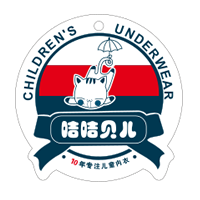- English
- Español
- Português
- Deutsch
- Français
- Italiano
- हिन्दी
- Русский
- 한국어
- 日本語
- العربية
- ภาษาไทย
- Türkçe
- Nederlands
- Tiếng Việt
- Bahasa Indonesia
- עברית
- Afrikaans
- አማርኛ
- Azerbaijani
- беларуская мова
- Български
- বাংলা
- bosanski jezik
- Català
- Binisaya
- Corsu
- Čeština
- Cymraeg
- Dansk
- Ελληνικά
- Esperanto
- Eesti Keel
- Euskara
- فارسی
- Suomi
- Frysk
- Gaeilge
- Gàidhlig
- Galego
- ગુજરાતી
- Harshen Hausa
- ʻŌlelo Hawaiʻi
- Hmoob
- Hrvatski
- Kreyòl Ayisyen
- Magyar
- Հայերեն
- Asụsụ Igbo
- Íslenska
- Basa Jawa
- ქართული
- Қазақ тілі
- ភាសាខ្មែរ
- ಕನ್ನಡ
- Kurdî
- кыргыз тили
- Lëtzebuergesch
- ພາສາລາວ
- Lietuvių
- Latviešu
- Malagasy fiteny
- Te Reo Māori
- македонски
- മലയാളം
- Монгол
- मराठी
- Bahasa Melayu
- Malti
- မြန်မာစာ
- नेपाली
- Norsk
- Chinyanja
- ଓଡ଼ିଆ oṛiā
- ਪੰਜਾਬੀ
- Polski
- پښتو
- Română
- Ikinyarwanda
- سنڌي
- සිංහල
- Slovenčina
- slovenščina
- Gagana Sāmoa
- ChiShona
- Af-Soomaali
- Shqip
- Српски
- Sesotho
- Basa Sunda
- Svenska
- Kiswahili
- தமிழ்
- తెలుగు
- Тоҷикӣ
- Türkmençe
- Filipino
- татарча
- ئۇيغۇر تىلى
- Українська
- اردو
- Oʻzbek tili
- isiXhosa
- ײִדיש
- èdè Yorùbá
- 中文(简体)
- 中文(漢字)
- isiZulu

Kids pajamas are an important part of children's daily wear. Their design is not only about comfort and aesthetics, but also can invisibly cultivate children's good sleeping habits. Well-designed Kids pajamas can promote children's sleep quality in many aspects, thus helping their healthy growth.
First of all, the color selection of Kids pajamas has an important impact on children's emotions. Soft, warm colors such as light blue, light pink, etc. can create a peaceful and comfortable atmosphere, helping children relax and enter a deep sleep. Colors that are too dazzling or bright may stimulate children's visual nerves and affect their sleep quality.
Secondly, the material of pajamas is also the key to cultivating good sleeping habits in children. Choosing fabrics with good breathability, softness and comfort can keep children dry and comfortable during sleep and reduce the number of times they wake up due to stuffiness or discomfort. In addition, fabrics with special functions such as antibacterial and anti-mite can effectively protect children's skin health and provide safety for their sleep.
Furthermore, the design of Kids pajamas should also focus on comfort and convenience. The loose fit and non-restrictive design allow children to turn over freely during sleep, reducing the feeling of restriction. At the same time, the easy-to-put-on and take-off design can also help children quickly prepare for bedtime, reduce procrastination and dilly-dally, and cultivate their awareness of time management.
Finally, parents can enhance the parent-child relationship by selecting and wearing beautifully designed pajamas with their children, while guiding their children to realize the close connection between pajamas and sleep. Through daily interaction and education, children can gradually develop good sleep habits and lay a solid foundation for their healthy growth.
To sum up, through carefully designed Kids pajamas, we can cultivate good sleep habits in children from many aspects and provide strong support for their healthy growth.


